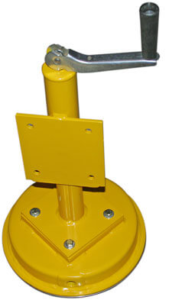Lifting and rigging equipment is required in many applications. Recommended in safe lifting manuals, it dramatically reduces instances of workplace injuries and fatalities. However, selecting the wrong equipment is just as bad, if not more so, as not having any heavy load moving machinery.
In today’s blog, Hovair Systems breaks down the factors you should include in your buying decision.
Storage Location
It would help if you were practical about the equipment you want. This means assessing your location and the space you can make for the equipment in comparison to the position of your materials.
You should place your new lifting gear to access the material that needs to be lifted easily. Moreover, it should have sufficient space to move around, so:
- Move the removable obstructions.
- Measure the size of the available space.
- Browse suitable gear.
Installation Caveats
You should check out a lifting equipment’s installation method before buying it. Different machines have different installation requirements, so you might have to ensure that your location, landlord, and/or planning authority supports your selection.
For instance, if your lifting gear has to be bolted into place rather than another machine, you might have to jump through a few hoops to manage the construction. On the other hand, if it can be mounted on another machine, such as our air lifting jacks on air bearings, you might be able to tick this factor off your list.
 Weight Capacity
Weight Capacity
You probably already know that weight capacity is crucial in your buying decision. You’re better off with equipment with the weight limit mentioned in big, bold font. Similarly, you may also want to check out the weight of the lifting gear before buying it. Too heavy and it might not be easy to operate; too light, it might buckle under the load.
You can assess your weight requirements using your heaviest load as a guiding point. We recommend gear whose capacity far exceeds yours to ensure safe and long-lasting operations.
Nature of Use
There isn’t one-size-fits-all lifting equipment in the market because it serves many industries. For instance, an aircraft manufacturer may require lifting gear that supports horizontal lifting, whereas a loading dock manager might have more use for vertical lifting gear.
You may also want to analyze the lifting duration by seeing if the place where you’re dropping off the materials is close to or far away from your location.
Select your heavy load carrier based on the above factors and only use them for their intended purpose to ensure long-term use and prevent accidents. Make your staff’s safety a sure thing by considering our material handling equipment for your light or heavy lifting. See if our heavy machinery lifting equipment fits your application. Alternatively, contact us to order custom lifting gear for your unique application.

 Weight Capacity
Weight Capacity